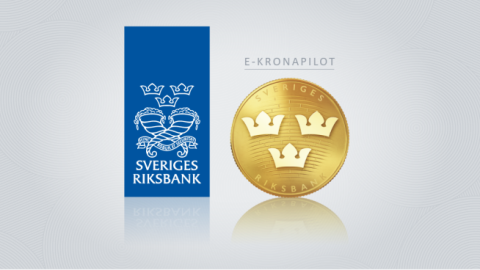Central Bank Digital Currencies (CBDCs) have emerged as a groundbreaking development, redefining the traditional concepts of currency and finance. In the digital age, financial innovation is swiftly transforming the way we perceive and engage with money. Let’s delve deeper into this revolutionary financial instrument that’s reshaping the global economic landscape.


Table of Contents
Central Bank Digital Currencies Defined
Central Bank Digital Currency (CBDC) refers to a digital form of a country’s fiat currency that is issued and regulated by the central bank. Unlike cryptocurrencies like Bitcoin or Ethereum, which are decentralized and operate on blockchain technology, CBDCs are centralized and typically operate on a permissioned or controlled network maintained by the central bank or a consortium of financial institutions.
CBDCs are designed to function as a digital representation of a nation’s sovereign currency, offering a government-backed form of digital money.
What Sets CBDCs Apart?
Central Bank Digital Currencies (CBDCs) represent a significant departure from both traditional fiat currencies and decentralized cryptocurrencies. Unlike cryptocurrencies, which operate on decentralized networks outside the control of any central authority, CBDCs are centralized and issued by a country’s central bank. They are recognized as legal tender and backed by the government, providing a level of trust akin to traditional money.
One of the key distinctions lies in their purpose and regulatory compliance. CBDCs can be tailored to meet specific economic goals, comply with financial regulations, and allow for direct oversight by central banks. This design enables the implementation of measures to monitor transactions, enforce regulations, and prevent illegal activities.
Moreover, CBDCs offer the potential to innovate by integrating technologies like blockchain or distributed ledger systems, enhancing the efficiency of payment systems and modernizing monetary policy tools. They’re envisioned to coexist with physical cash, offering a digital counterpart while maintaining access to traditional money.
The Evolution of Money
The evolution of money has been a dynamic journey, progressing from barter systems to physical currency and now transitioning into digital forms. CBDCs represent the latest milestone in this journey, combining the benefits of digitization with the stability and reliability of government-backed currencies.
Types of CBDCs
The landscape of CBDCs comprises diverse models and implementations, each bearing unique characteristics and implications. Broadly categorized, CBDCs can be retail or wholesale.
a. Retail CBDCs
Retail CBDCs cater to the general public, allowing individuals and businesses direct access to and utilization of the digital currency. These can manifest as account-based or token-based systems. In an account-based model, individuals hold accounts directly with the central bank, while token-based systems involve the issuance of digital tokens representing currency.
For instance, China’s digital yuan, known as the Digital Currency Electronic Payment (DCEP), operates as a retail CBDC, offering convenience and accessibility to citizens through digital wallets.


b. Wholesale CBDCs
Wholesale CBDCs target interbank transactions and settlements, primarily benefiting financial institutions and banks. These facilitate faster and more efficient interbank transactions, bolstering the overall stability of the financial system by reducing settlement times and operational costs.
An example is the collaboration between the Bank of Canada, the Bank of England, the Bank of Japan, the European Central Bank, the Sveriges Riksbank, and the Swiss National Bank to explore wholesale CBDCs for cross-border transactions, aiming to enhance efficiency and reduce risks in the global financial system.
The Impacts of CBDC Implementation
The integration of Central Bank Digital Currencies into the financial ecosystem brings about multifaceted implications across various sectors.
a. Financial Inclusion and Accessibility
CBDCs have the potential to significantly enhance financial inclusion by providing access to financial services for unbanked and underbanked populations. With digital currencies, individuals without traditional bank accounts can participate in the economy more seamlessly.
For example, the e-Krona project in Sweden aims to provide access to digital currency for all citizens, ensuring financial inclusivity.


b. Monetary Policy and Economic Stability
CBDCs empower central banks with advanced tools for implementing monetary policies, enabling more precise control over money supply, interest rates, and economic stability. This heightened control can aid in mitigating economic crises and adapting to changing economic conditions, fostering stability and growth.
Privacy and Security Considerations
While CBDCs offer convenience and transparency, concerns regarding privacy and data security persist. Balancing traceability for regulatory purposes while safeguarding user privacy remains a significant challenge in CBDC implementation. Strides in encryption technologies and privacy-preserving protocols are crucial in addressing these concerns without compromising security.
Conclusion
Central Bank Digital Currencies stand at the forefront of financial innovation, poised to reshape economies and societies on a global scale. As these digital currencies continue to evolve and gain prominence, discussions surrounding their implementation, impacts, and regulatory frameworks become increasingly imperative.
The Bottom Line
At its core, a Central Bank Digital Currency (CBDC) is a government-issued digital representation of a country’s fiat currency, designed to modernize financial systems and meet evolving economic needs. It aims to achieve financial inclusion, improve transaction efficiency, bolster monetary policy tools, ensure regulatory oversight, and drive technological innovation within a regulated framework. CBDCs stand as a pivotal step toward a more inclusive, efficient, and technologically advanced financial ecosystem under central bank control.



